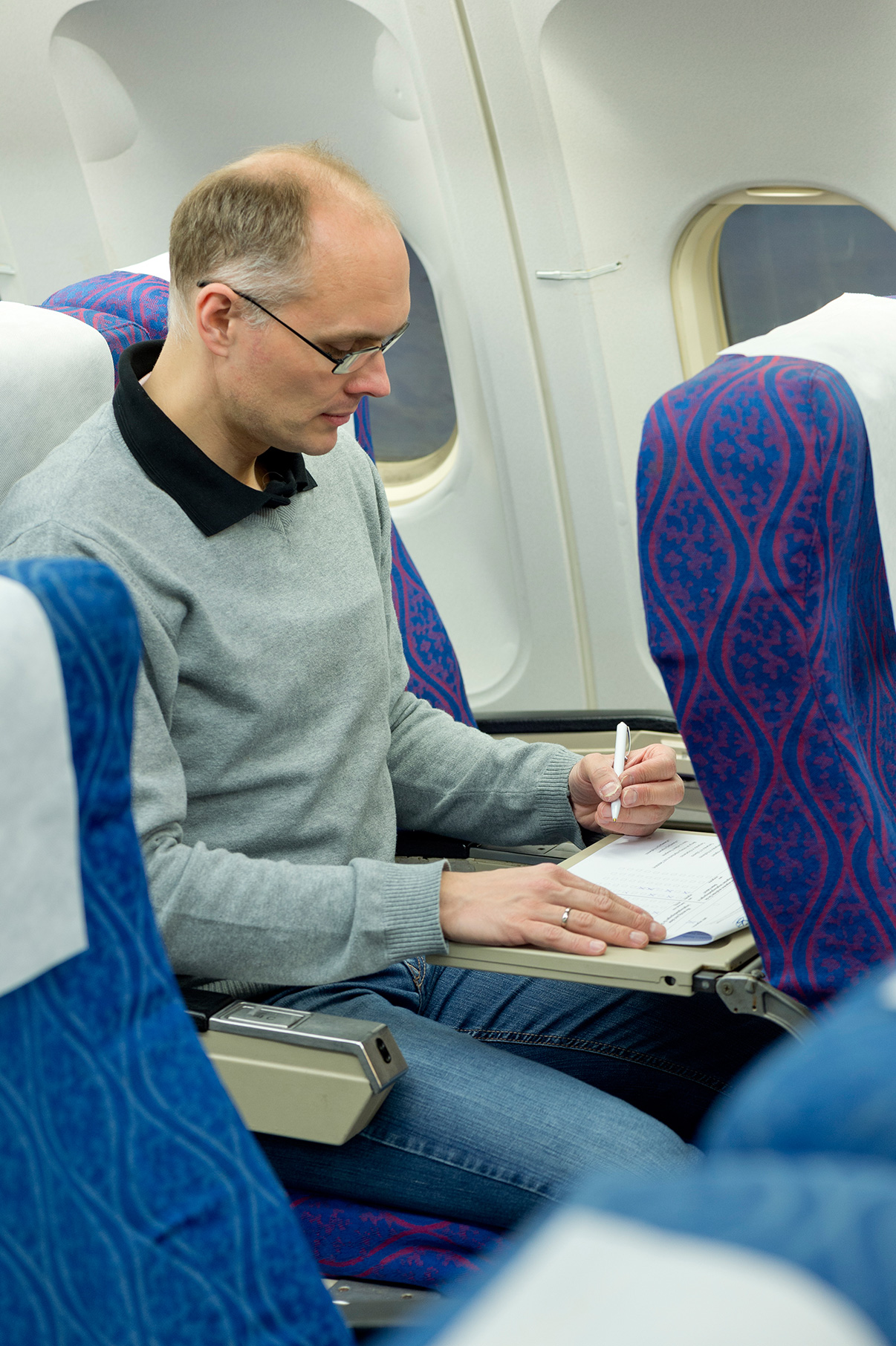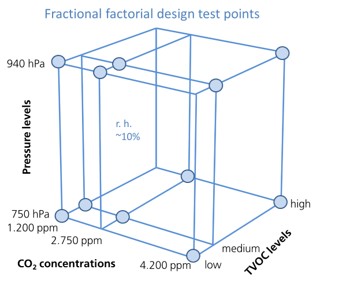Changes in air pressure, CO2 or VOC concentrations affect the performance and well-being of aircraft passengers. But to what extent, and how must the fresh air rate be adapted to suit the number of people on board? Our scientists addressed these and other questions in projects such as “CognitAir” and “ComAir”. Against this background, large-scale subject studies were conducted, each involving approximately 500 participants. The four-hour “flights” took place in the low-pressure vessel of the Flight Test Facility (FTF), Fraunhofer IBP’s flight laboratory in Holzkirchen.
Air quality in the aircraft cabin - subject tests in the Flight Test Facility (FTF)
Project goals
In the Clean Sky 2 project “ComAir”, the concept of demand-controlled ventilation was assessed. The cabin is ventilated by bleed air from the engine. However, this increases fuel consumption. Thus, the less bleed air supplied, the lower the fuel consumption. Demand-controlled ventilation is already implemented in the building sector. This is based on adjusting the supply rate of fresh air to the number of people in the room. To find out to what extent this principle can be transferred to aircraft cabins and to determine the optimum fresh air rate, more than 500 test subjects were asked questions about their well-being. The amount of fresh air per passenger and the cabin occupancy (50% or 100%) were varied.
The ASHRAE co-funded project “CognitAir” investigated which cabin climate parameters - CO2 content, VOC concentration (volatile organic compounds) or cabin pressure - cause comfort or discomfort. Their impact on the performance of the test subjects was evaluated in a subject study with over 400 participants.
Current project status
Results showed that a lower fresh air rate in the cabin is associated with an increase in CO2 and VOC concentrations. However, neither the subjects nor a trained odor panel could detect the presence of unpleasant smells or a decrease in indoor air quality. Occupancy turned out to be a key comfort factor for the subjects - with 50% occupancy, the adjacent seat was free, and the feeling of well-being was significantly higher.
Further analyses of subject and test data are currently underway.
Project partners
ComAir:
- Danmarks Tekniske Universitet, Lyngby
- Ludwig-Maximilians-Universität München – institute and polyclinic for occupational, social and environmental medicine
CognitAir:
- Airbus
- ASHRAE
- Danmarks Tekniske Universitet, Lyngby
- Embraer
- enVerid
- Honeywell
- Liebherr
- Ludwig-Maximilians-Universität München –institute and polyclinic for occupational, social and environmental medicine
- NPL
- Pall
- Renewaire
- UTRC

